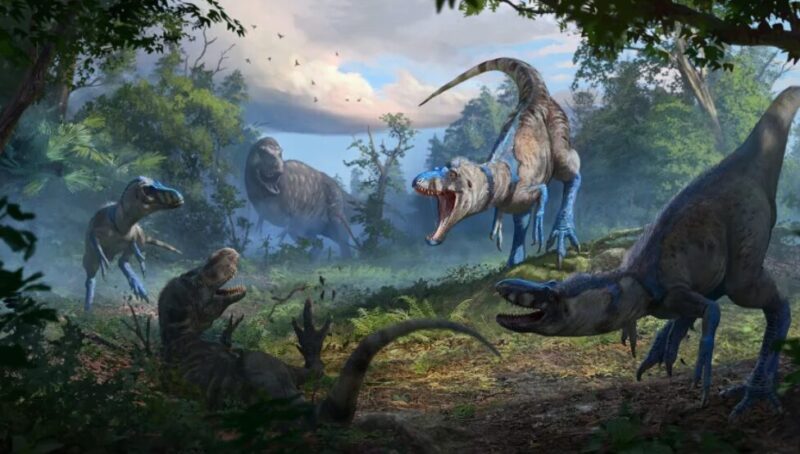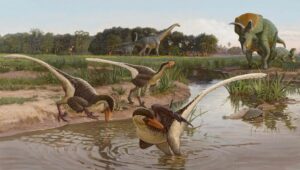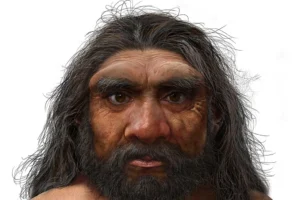For over four decades, paleontologists have been arguing about a small dinosaur skull found in Montana. Several Tyrannosaurus rex fossils have been found in the same Hell Creek rock formation, and this little skull shares several similarities with the giant dino predator.
Some experts claimed it was simply a young T. rex. Others argued it was a completely different animal. A new study answers the 40-year-old question: the Nanotyrannus lancensis is its own species.
The little skull dates back 67 million years, the exact time period when T. rex roamed North America. Because of its small size, researchers who found the skull in the 1940s said they had found a new species, which they called Gorgosaurus lancensis.
In 1988, scientists reclassified the species and renamed it the Nanotyrannus lancensis. Then, just a few years later, the general consensus changed, and paleontologists insisted that it was actually a young T. rex.
Since then, much of the research done on how this fearsome species grew to adulthood hinged on the remains of this supposed juvenile dinosaur. Now, consensus has changed again, and this time for good.
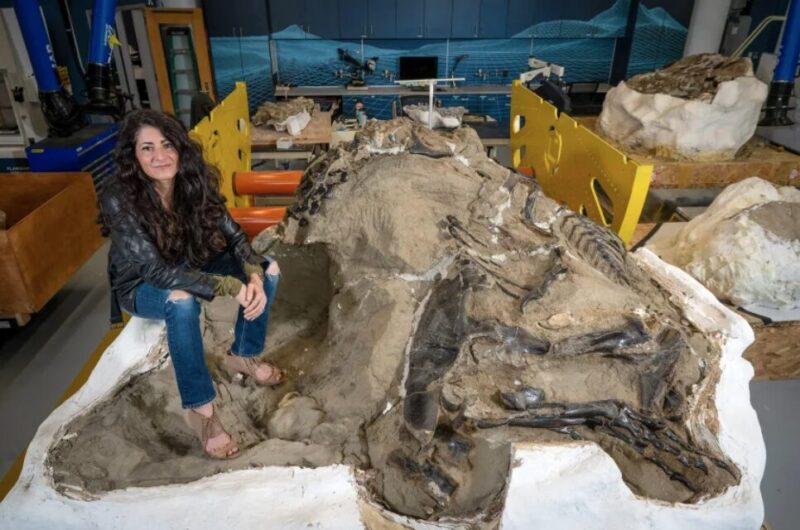
Lindsay Zanno next to the ‘Dueling Dinosaurs.’ Photo: North Carolina State University
‘Dueling dinosaurs’ cracked the case
The new research team has been studying the “dueling dinosaurs” at the North Carolina Museum of Natural Sciences for five years. The remains show two dinosaurs frozen in mid-battle – a Triceratops and a small Tyrannosaurus rex. At least, that is what everyone thought it showed. Actually, it shows a Triceratops and a Nanotyrannus.
The team cut into the limb bones of the dinosaur and looked at its growth rings. The dinosaur was not a juvenile; it was 20 years old when it died –– almost fully grown.
They also examined its general anatomy. Its skull shares features with the N. lancensis skull from Hell Creek. Despite its smaller size, it has larger forelimbs than a T. rex, more teeth and fewer vertebrae in its tail. All of these factors would occur in the early stages of development. There is no way this dinosaur can have morphed into an adult T. rex.
“For it to change from that to an adult Tyrannosaurus would defy our knowledge of how vertebrates grow,” said Lindsay Zanno, co-author of the study. “It just doesn’t hold up as a teen rex.”
They estimate the small dinosaur would have weighed around 700 kilograms — tiny in comparison to an adult T. rex, which weighed an estimated 6,700kg to 8,200kg. They believe the Nanotyrannus is a relative of the T. rex, which diverged from Tyrannosaurs around 100 million years ago.
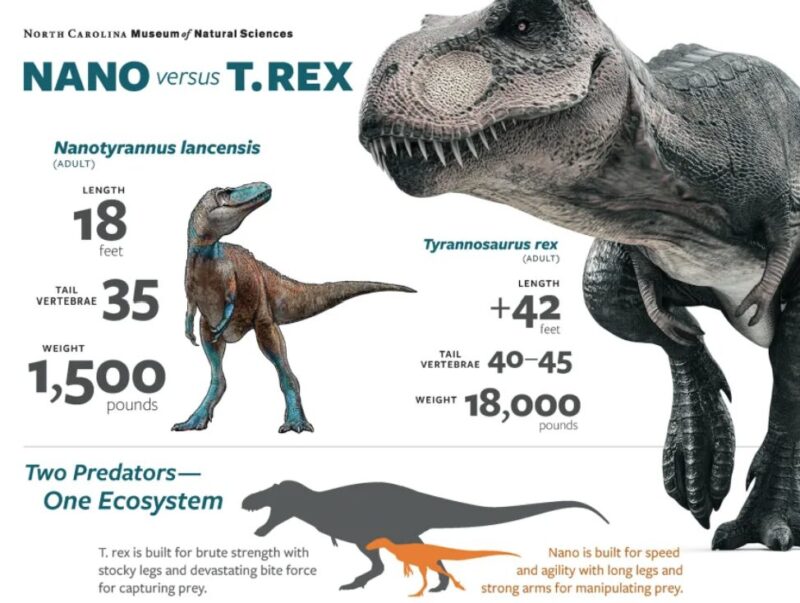
Infographic showing the differences between the Nanotyrannus and Tyrannosaurus rex. Image: North Carolina Museum of Natural Sciences
Overturns decades of research
“In a very real way, this discovery overturns decades of research on the growth and biology of Tyrannosaurus rex,” Zanno told The New York Times. “A wealth of studies on the biology of T. rex over the past three decades have unknowingly mixed data from Nanotyrannus with that of T. rex. Those studies need to be reevaluated in light of this discovery,” she added.
Many palaeontologists, who have spent much of their careers studying the T. rex, have expressed support for the new research.
“For many years in my research on tyrannosaurs, I’ve considered a set of smaller skeletons found in the same rocks as the famous skeletons of huge T. rexes to be juveniles of T. rex rather than a distinctive smaller species,” Steve Brusatte admitted to Live Science. “Evidence from this exquisite new specimen shows that I was wrong — at least in part. The case for Nanotyrannus, a species of long-armed tyrannosaur smaller than T. rex, looks strong, and I think proven beyond a reasonable doubt now.”
Rather than viewing it as years of wasted research, Zanno sees it as an opportunity.
“What’s exciting is that this discovery opens the door to a whole series of new questions about how these different predators — one built for brute strength and one built for speed — interacted in the twilight of the dinosaurs.”
